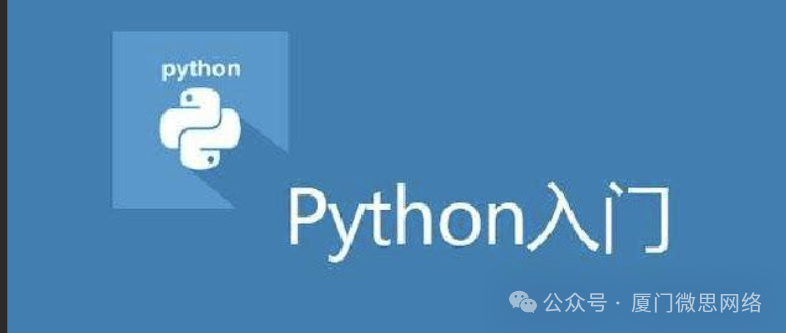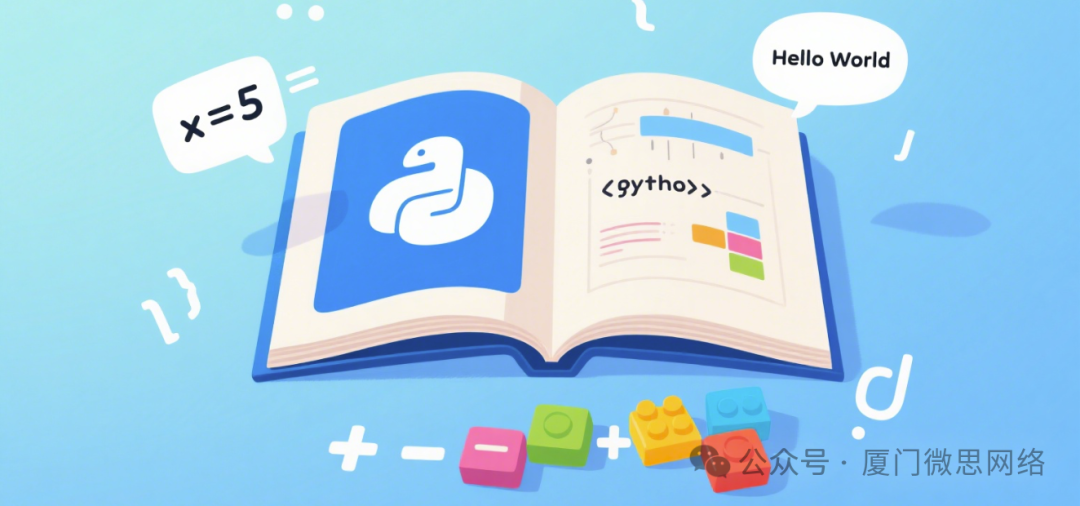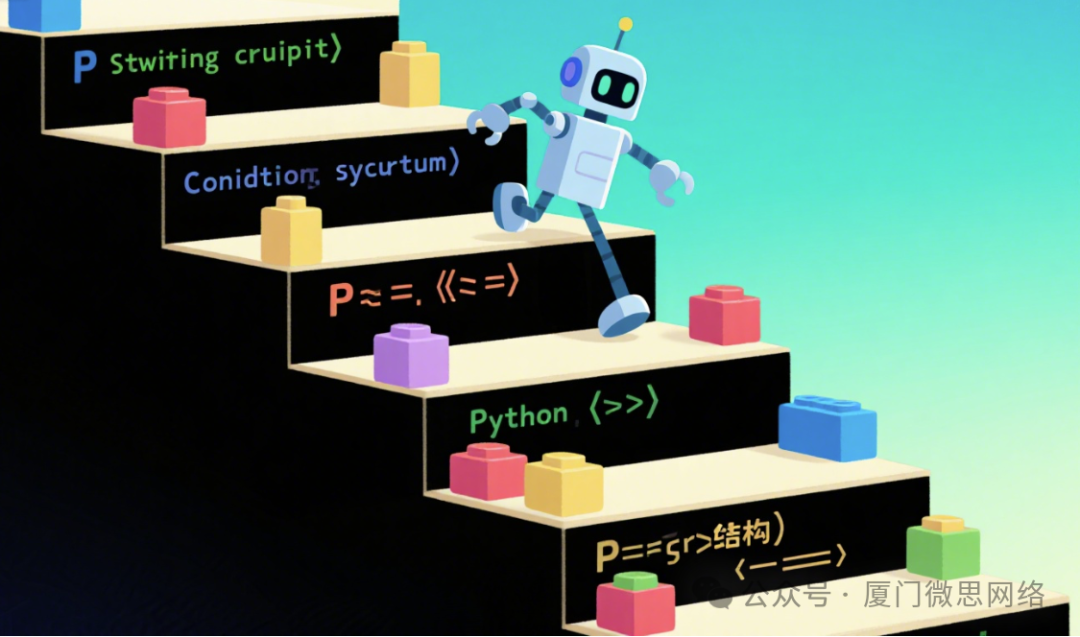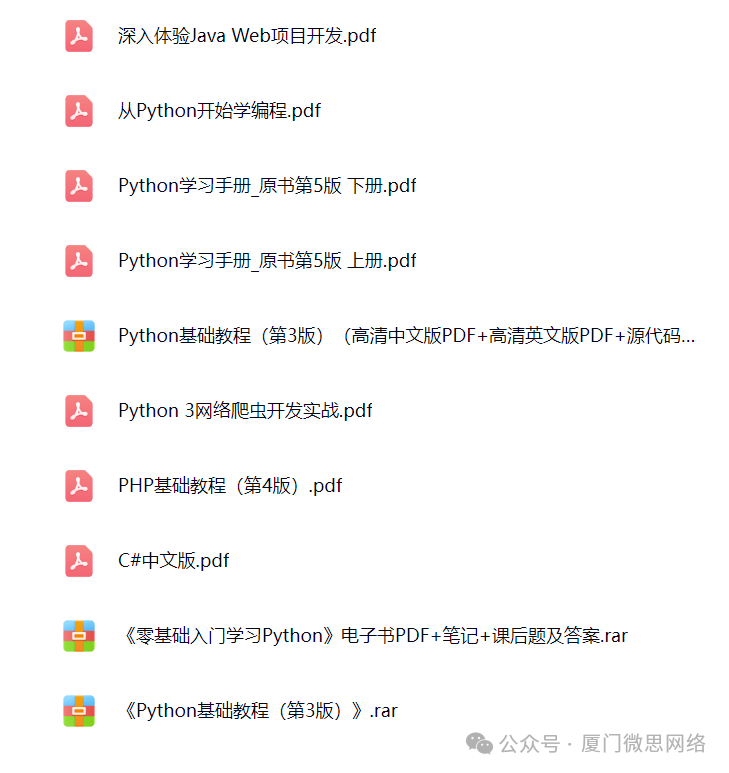Python基础语法练习
本文涵盖了 Python 基础编程中的多个重要概念,从简单的输出语句到运算符、字符串操作、变量赋值等都有涉及。

这些例子非常适合初学者学习和理解 Python 的基本语法。
1. Hello World
# 输出Hello Worldprint("Hello, World!")

2. 变量赋值
# 创建变量并赋值name = "Python"age = 30height = 1.75print(f"语言: {name}, 年龄: {age}, 版本: {height}")
3. 用户输入
# 获取用户输入name = input("请输入您的姓名: ")print(f"您好, {name}!")
4. 数据类型检查
# 检查数据类型num = 42text = "Hello"flag = Trueprint(f"num的类型: {type(num)}")print(f"text的类型: {type(text)}")print(f"flag的类型: {type(flag)}")
5. 基本运算
# 基本数学运算a = 10b = 3print(f"加法: {a + b}")print(f"减法: {a - b}")print(f"乘法: {a * b}")print(f"除法: {a / b}")print(f"整除: {a // b}")print(f"取余: {a % b}")print(f"幂运算: {a ** b}")
6. 字符串操作
# 字符串基本操作text = "Python Programming"print(f"原字符串: {text}")print(f"转大写: {text.upper()}")print(f"转小写: {text.lower()}")print(f"字符串长度: {len(text)}")print(f"替换: {text.replace('Python', 'Java')}")

7. 字符串格式化
# 字符串格式化的不同方法name = "张三"age = 25score = 95.5# 方法1: f-stringprint(f"姓名: {name}, 年龄: {age}, 分数: {score:.1f}")# 方法2: format方法print("姓名: {}, 年龄: {}, 分数: {:.1f}".format(name, age, score))# 方法3: %格式化print("姓名: %s, 年龄: %d, 分数: %.1f" % (name, age, score))
8. 注释练习
# 这是单行注释print("Hello") # 行末注释"""这是多行注释可以写很多行用于详细说明"""print("World")
9. 常量定义
# Python中的常量约定(使用大写字母)PI = 3.14159MAX_SIZE = 100APP_NAME = "我的应用"print(f"圆周率: {PI}")print(f"最大尺寸: {MAX_SIZE}")print(f"应用名称: {APP_NAME}")
10. 多变量赋值
# 多变量同时赋值a, b, c = 1, 2, 3print(f"a={a}, b={b}, c={c}")# 交换变量值x, y = 10, 20print(f"交换前: x={x}, y={y}")x, y = y, xprint(f"交换后: x={x}, y={y}")
11. 转义字符
# 转义字符的使用print("第一行\n第二行") # 换行print("制表符\t分隔")print("引号: \"Hello\"")print("反斜杠: \\")print("回车: \r覆盖")
12. 原始字符串
# 原始字符串(r-string)path = r"C:\Users\Documents\file.txt"regex = r"\d+\w*"print(f"文件路径: {path}")print(f"正则表达式: {regex}")
13. 字符串切片
# 字符串切片操作text = "Python Programming"print(f"前6个字符: {text[:6]}")print(f"后11个字符: {text[7:]}")print(f"中间部分: {text[7:18]}")print(f"每隔一个字符: {text[::2]}")print(f"反转字符串: {text[::-1]}")
14. 字符串判断
# 字符串内容判断text = "Python123"print(f"是否为数字: {text.isdigit()}")print(f"是否为字母: {text.isalpha()}")print(f"是否为字母数字: {text.isalnum()}")print(f"是否为小写: {text.islower()}")print(f"是否为大写: {text.isupper()}")
15. 输入类型转换
# 输入数据类型转换try:age = int(input("请输入您的年龄: "))height = float(input("请输入您的身高(米): "))print(f"您今年{age}岁,身高{height}米")except ValueError:print("输入格式错误!")
16. 布尔运算
# 布尔运算和逻辑操作a = Trueb = Falseprint(f"a and b: {a and b}")print(f"a or b: {a or b}")print(f"not a: {not a}")print(f"not b: {not b}")# 比较运算x, y = 5, 10print(f"{x} > {y}: {x > y}")print(f"{x} < {y}: {x < y}")print(f"{x} == {y}: {x == y}")print(f"{x} != {y}: {x != y}")
17. 成员运算符
# in 和 not in 运算符text = "Hello World"print(f"'Hello' in text: {'Hello' in text}")print(f"'Python' in text: {'Python' in text}")print(f"'Python' not in text: {'Python' not in text}")numbers = [1, 2, 3, 4, 5]print(f"3 in numbers: {3 in numbers}")print(f"6 in numbers: {6 in numbers}")
18. 身份运算符
# is 和 is not 运算符a = [1, 2, 3]b = [1, 2, 3]c = aprint(f"a == b: {a == b}") # 值相等print(f"a is b: {a is b}") # 不是同一个对象print(f"a is c: {a is c}") # 是同一个对象x = Noneprint(f"x is None: {x is None}")print(f"x is not None: {x is not None}")
19. 运算符优先级
# 运算符优先级示例result1 = 2 + 3 * 4 # 乘法优先result2 = (2 + 3) * 4 # 括号改变优先级result3 = 2 ** 3 ** 2 # 幂运算从右到左result4 = 2 ** (3 ** 2) # 明确优先级print(f"2 + 3 * 4 = {result1}")print(f"(2 + 3) * 4 = {result2}")print(f"2 ** 3 ** 2 = {result3}")print(f"2 ** (3 ** 2) = {result4}")
20. 简单计算器
# 简单的计算器程序def simple_calculator():try:num1 = float(input("请输入第一个数字: "))operator = input("请输入运算符 (+, -, *, /): ")num2 = float(input("请输入第二个数字: "))if operator == '+':result = num1 + num2elif operator == '-':result = num1 - num2elif operator == '*':result = num1 * num2elif operator == '/':if num2 != 0:result = num1 / num2else:print("错误:除数不能为零!")returnelse:print("错误:不支持的运算符!")returnprint(f"结果: {num1} {operator} {num2} = {result}")except ValueError:print("错误:请输入有效的数字!")# simple_calculator() # 取消注释来运行


